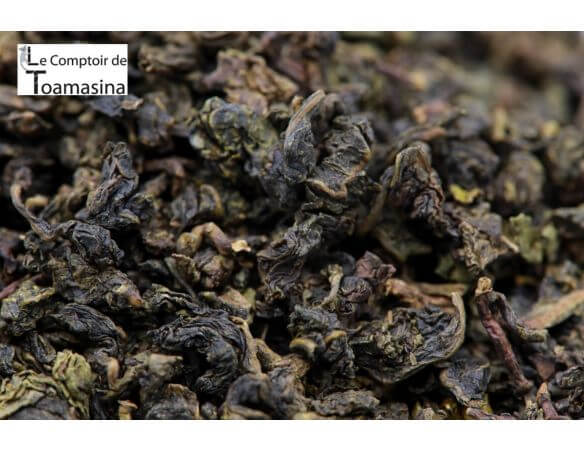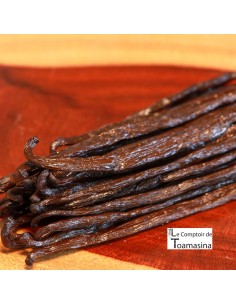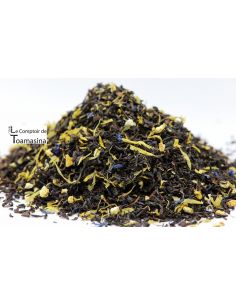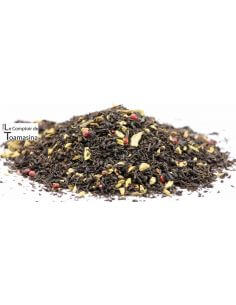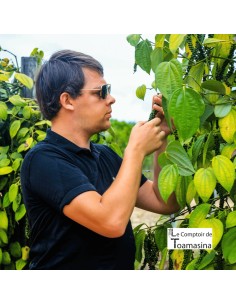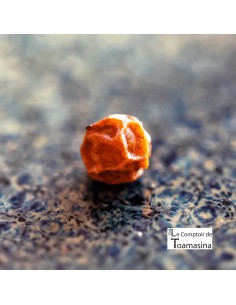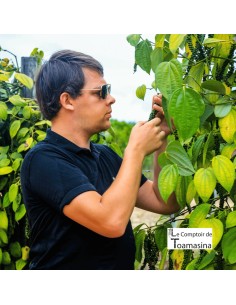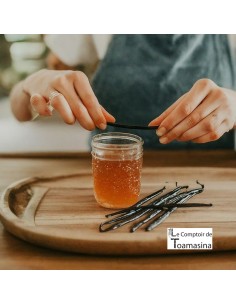At the base of all tea colors (dark, black, blue-green, green, yellow or white), there is one and the same plant, the tea plant, Camellia Sinensis in Latin.
You should know that it will symbolize authority and nobility. During the tea preparation stage you will discover why it is so unique. Halfway between green tea and black tea. It has a unique aromatic palette. It is found in the Fujian region, Tawain and other regions around the world.
Selection and processing of the harvest
The choices made when picking and processing the harvest are essential in determining the category of tea produced. A key element in this process is oxidation, a natural phenomenon which occurs in contact with air as soon as the plants are cut. For example, oxidation is what causes an avocado or apple to turn black when exposed to air.
Black tea undergoes complete oxidation, while green tea sees its oxidation stopped just after harvest. As for oolong, it is located between the two: its leaves are partially oxidized, which also earns it the name "semi-oxidized" tea (and not "semi-fermented", a term often used wrongly).
The Main Categories of Oolong Tea
Oolongs can be classified according to various criteria, the most relevant being the level of oxidation:
- Oolongs with very little oxidization (around 10%) : Produced according to the "Chinese method", they include teas such as Tie Guan Yin Imperial and Alishan, characterized by vegetal, floral and milky notes.
- Low-oxidized oolongs (10 to 40%) : Including Taiwanese teas such as Bao Zhong and Dong Ding, with fruity and floral aromas.
- Heavily oxidized oolongs (up to 70%) : Made according to the “Taiwanese method”, they offer woody and fruity notes, such as Oriental Beauty and Ruby oolong.
Lesser Known Categories
There are also less common but equally interesting oolongs:
- Dan Cong : Teas from individual tea plants, such as Mi Lan Xian.
- Aged Oolongs : Matured for years, mainly in Taiwan, developing mineral notes.
- Da Hong Pao : A Fujian oolong with fruity and toasted aromas.
The Making of Oolong Tea
The manufacturing method varies depending on the type of oolong desired:
- Picking : Buds and young leaves for lightly oxidized oolongs; large mature leaves for heavily oxidized oolongs.
- Withering : The leaves are left in the open air for a few hours.
- Oxidation : The leaves are brewed for 10 to 18 hours, with careful monitoring to determine when oxidation needs to be stopped.
- Desiccation : The leaves are heated to high temperatures to stop oxidation.
- Rolling : The sheets are rolled manually or by machine.
- Drying : The aromas are set around 100 to 120°C.
- Sorting : The remaining stems are removed.
- Final roasting (optional) : This step adds woody and sweet flavors, reduces astringency and caffeine/theine content.
Final Roasting: Why and How?
The final roasting complexifies the aromas and balances the tea, reducing astringency and the caffeine/theine level, while making the tea more digestible. This is a delicate step that requires great precision so as not to alter the natural aromas of the oolong.
Preparation and Tasting of an Oolong
To fully appreciate an oolong, it is recommended to use a small container and make several infusions, gradually increasing the infusion time. The gaiwan (or zhong) method is particularly recommended.
Necessary material :
- Gaiwan (or zhong)
- Reserve pot or bowl
- Small cup
- Thermos bottle for water
- Timer
Process :
- Warm the accessories with hot water.
- Place about 3 grams of tea in the gaiwan.
- Pour in the 95°C water and stir gently.
- Infuse between 15 and 45 seconds for the first infusion.
- Transfer the liquor to the reserve pot and drain the leaves well.
- Smell the infused leaves and the inside of the gaiwan lid.
- Enjoy the tea, gradually lengthening the infusion time for subsequent infusions.
Gong Fu Cha, the Chinese tea ceremony, is a refined tasting technique based on meticulousness, slowness and an eye for detail. It is ideal for discovering the nuances of the best oolongs, although it is a complex art worthy of further exploration.

